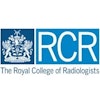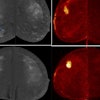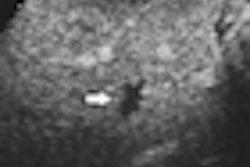
NEW YORK (Reuters Health) - Although rare, grade III coronary perforations remain associated with high rates of acute and long-term major adverse cardiac events, according to a recent study by Italian and English researchers.
The findings from their retrospective study, reported in the January issue of JACC: Cardiovascular Interventions, also include predictors of these severe perforations and recommendations regarding treatment.
The study was the first to focus on grade III perforations, lead author Dr. Rasha Al-Lamee, of San Raffaele Scientific Institute, Milan, told Reuters Health by e-mail.
Dr. Al-Lamee explained that the researchers chose this approach because although grade III cases "are relatively rare in the cardiac catheterization laboratory, they are often extremely dramatic, and operators have little guidance as to the best course of action when they do occur."
In a study population of 24,465 patients who underwent percutaneous coronary intervention (PCI) at either of two centers between May 1993 and December 2009, only 56 (0.23% incidence) sustained a grade III perforation.
Of those 56, 24 (42.9%) experienced a myocardial infarction either during the procedure or later in the same hospital stay. A total of 10 patients (17.9%) died during that time period.
Over a median follow-up of 38.1 months, 19 (41.3%) of the 46 remaining patients experienced a major adverse cardiac event, and seven (15.2%) died of any cause.
The four significant predictors of grade III coronary perforation were complex coronary (type B2/C) lesions, coronary occlusion, and the use of rotablation or intravascular ultrasound.
Besides taking additional care in these higher-risk cases, Dr. Al-Lamee said, measures to prevent coronary perforation should include appropriate assessment of vessel size (using extra care when a vessel is less than 2.5 mm) and careful selection of balloon and stent size.
The study also found that the use of glycoprotein IIb/IIIa inhibitors increased the risk of procedural and in-hospital major adverse cardiac events.
Among the multiple treatment methods used, the authors noted that "prolonged balloon inflation and covered stent implantation were successful in a reasonable proportion of cases."
The report also includes a proposed flowchart to guide treatment decisions in the event of a grade III perforation.
"Grade III coronary perforation is a feared and dramatic complication of PCI with poor immediate outcomes and very high mortality rates," the authors wrote.
"An interventional cardiologist must be prepared for this iatrogenic event," they concluded.
In an accompanying editorial, Dr. Eric Eeckhout and Dr. Rodney De Palma of the Centre Hospitalier Universitaire Vaudois, Lausanne, Switzerland, commented that although the complication remains rare, "the incidence of perforation has not decreased over time, probably reflecting the increased complexity of PCI practice."
By Scott Baltic
Source: http://bit.ly/i57eZx
J Am Coll Cardiol Intv 2011
Last Updated: 2011-01-28 11:40:09 -0400 (Reuters Health)
Copyright © 2011 Reuters Limited. All rights reserved. Republication or redistribution of Reuters content, including by framing or similar means, is expressly prohibited without the prior written consent of Reuters. Reuters shall not be liable for any errors or delays in the content, or for any actions taken in reliance thereon. Reuters and the Reuters sphere logo are registered trademarks and trademarks of the Reuters group of companies around the world.



















